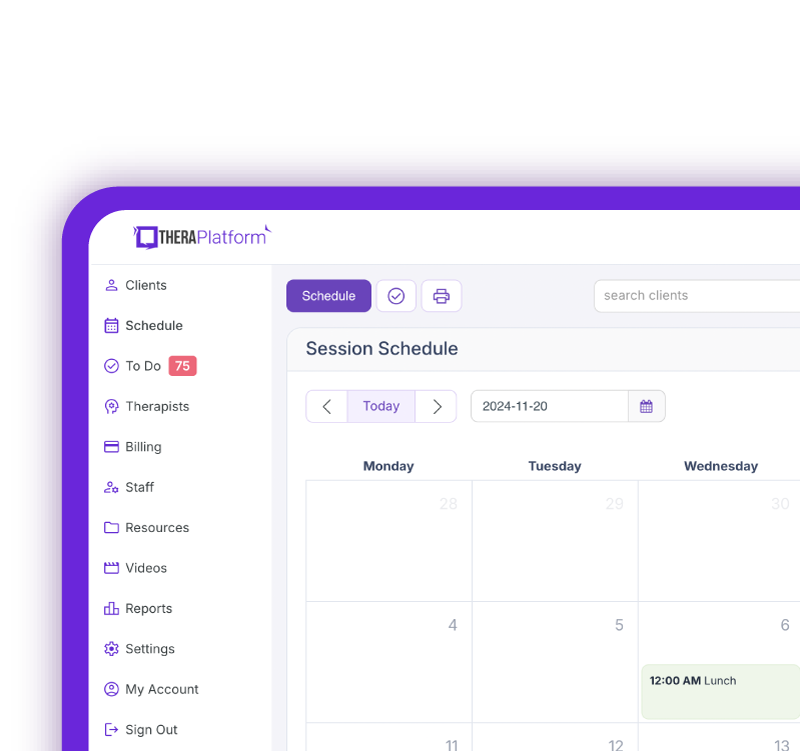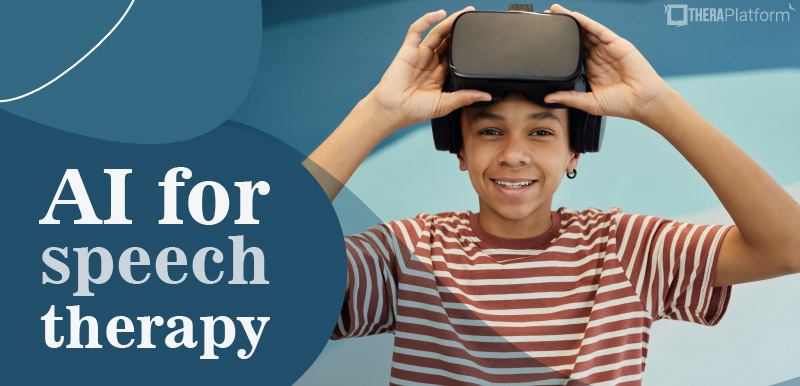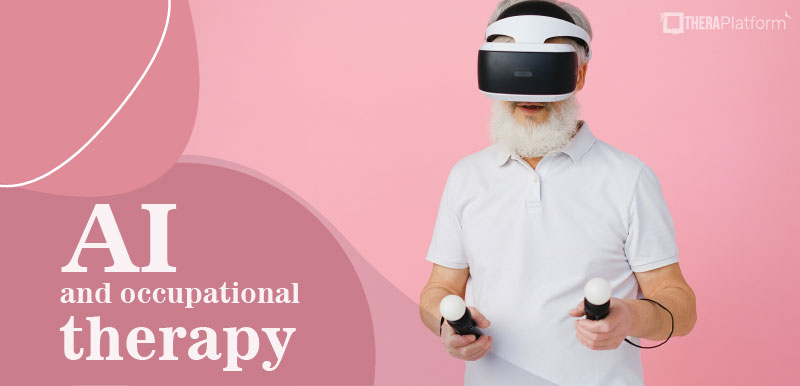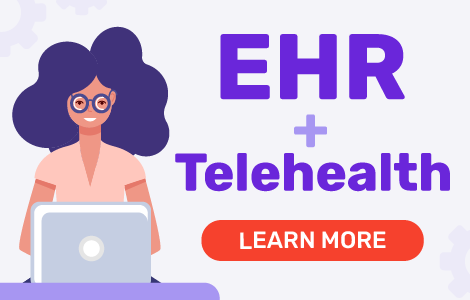AI and PT

AI and physical therapy are part of a more significant movement as the healthcare industry has adopted artificial intelligence at a blistering pace. The far-reaching and long-lasting implications of AI remain undetermined. Still, there is no underestimating the impact and influence that AI will continue to have on healthcare professions like physical therapy.
Summary
- Artificial intelligence is transforming physical therapy by personalizing treatment plans, enabling real-time monitoring, and supporting virtual coaching and remote care.
- AI enhances clinical decision-making through predictive analytics, movement analysis, and data-driven insights that improve outcomes and promote preventative care.
- Clinicians can now streamline documentation by entering a few keywords, brief session summaries, or even dictating notes—AI will instantly generate a polished, structured SOAP note. For added efficiency, transcripts from recorded telehealth sessions can be automatically transformed into detailed clinical notes with a single click. One of the easiest ways to leverage this technology is through electronic medical records (EMRs) that offer built-in AI documentation tools, such as TheraPlatform.
- Despite its promise, ethical concerns such as data quality, human bias, privacy, and equitable access must be addressed to ensure responsible and effective integration into physical therapy.
Streamline your practice with One EHR
- Scheduling
- Flexible notes
- Template library
- Billing & payments
- Insurance claims
- Client portal
- Telehealth
- E-fax

If you're a physical therapist and curious about AI and PT applications, follow along to learn how AI enhances and streamlines client care and brings practice into the future.
Modernizing the landscape of physical therapy
Artificial intelligence is a rapidly evolving field. Using AI, computers are now performing tasks that can only be accomplished via human intelligence. Various techniques, such as deep learning (DL), machine learning (ML), and natural language processing (NLP), provide the foundation for AI's effectiveness and ability to gather, interpret, and store large amounts of data and subsequently perform predictions and other functions based on what it has "learned."
At this point in its development, AI has the potential to revolutionize healthcare, and the physical therapy profession is adopting more and more AI applications.
Some of the more common functions of AI in healthcare include assistance in diagnosing conditions, matching conditions and patient-specific characteristics to best treatment interventions, treatment dose optimization, intervention delivery, predictive analytics and risk management, virtual healthcare, and more.
Let's explore some of the applications of AI and physical therapy.
Watch this video to discover 3 smart ways AI can speed up your note-taking
→ Start My Free Trial
AI for physical therapy notes: Faster, smarter, and secure
AI is transforming private and group practice operations by reducing the time spent on administrative tasks —especially documentation. What once took hours can now be completed in minutes with AI-powered notes, built directly into TheraPlatform, an all-in-one EHR, practice management, and teletherapy solution.
Clinicians can securely create notes in three AI streamlined ways on TheraPlatforms’s EHR:
- Text-to-text AI notes: Enter a few keywords or a session summary, and AI will generate a fully structured clinical note.
- AI dictation: Speak directly into your microphone—AI transcribes and refines your words into clear, professional documentation.
- Telehealth AI notes: Automatically transcribe and convert recorded telehealth session audio and video into editable clinical notes.
All documentation is stored securely using end-to-end encryption and is fully HIPAA compliant. Importantly, your data is never used to train external AI models, ensuring strict privacy and control.
Practice Management + EHR + Telehealth
Manage more in less time in your practice with TheraPlatform

Benefits of AI and physical therapy for client care
Personalized treatment plans and AI-driven assessments
A personalized treatment plan is always the most effective for a client, and AI can personalize both assessments and treatment plans. Through pattern analysis of data collected from large populations of people with similar symptoms, injuries, or health conditions, AI tools can develop a personalized treatment plan and recommend the most valuable assessments, increasing the efficiency and effectiveness of a care plan.
Real-time monitoring and adaptation
AI and physical therapy can provide real-time monitoring of patient performance and progress and suggest or implement adaptations and changes to their care plans in response. This may incorporate patient-submitted data in logs or questionnaires, therapist documentation of objective findings and assessments, and video or sensor-based metrics.
Movement analysis
Video and sensor-monitored movement analysis uses AI technology to measure movement components such as speed, weight distribution, and range of motion. It analyzes this data compared to known normative values, population-based metrics, prior performance, and more.
Therapists can use this data to predict injury risk, determine progress, identify causes of pain, and help structure a care plan.
Virtual coaching and telerehabilitation
Many AI-forward physical therapy platforms take advantage of virtual coaching and telerehabilitation which allows therapists to work remotely. Clients receive care in a space and time that is most convenient for them. Virtual coaching can also target injury prevention and lifestyle adaptations.
Watch this video to find out more about launching teletherapy in your practice
Sign up for My Free Teletherapy E-Course
Accessibility for patients in underserved or remote areas
Access to specialized care has always been limited in underserved and remote areas. AI physical therapy tools that incorporate telerehabilitation can help close the gap in healthcare access for those who have difficulty leaving their homes or live far away from the care they need. It can also boost the chances that people in rural areas seek healthcare and get screenings needed to prevent health conditions.
Predictive analytics
Predictive analytics use algorithms to analyze large pools of patient data to predict health outcomes, improve care delivery, and enhance the precision of treatments and diagnoses. This can reduce care costs, help patients improve quickly, and ensure they receive the proper care.
Data-driven insights for preventative care
While physical therapists traditionally address injury and illness after they happen, there is much room for our professionals in the preventative care space. AI predictive analytics tools can help physical therapists develop individualized preventative care programs for their patients. An ounce of prevention, in this case, could be worth a lot!
Free Resources for Therapists
Click below and help yourself to peer-created resources:

Benefits of AI and physical therapy for clinicians
Many clinicians are leaving the industry because of burnout. Pressures to be more productive lead to long working hours and higher stress levels.
AI's capabilities in reducing clinician burnout fall within three categories:
- Assist: AI tools can assist clinicians by dictating client encounters, suggesting efficient care plans compiling a differential diagnosis, or helping to create a personalized home exercise plan.
- Augment: AI applications can make suggestions about other services patients may need and screen them for additional concerns to be addressed.
- Automate: Filing prior authorizations, coding for treatments, sending out reminders, and keeping track of progress notes and plans of care are all automation tools that AI can use to reduce a clinician's workload.
AI tools can also increase patient engagement, enhance adherence to therapy, and improve accuracy in diagnosing and treating many common conditions.
Practice Management + EHR + Telehealth
Manage more in less time in your practice with TheraPlatform

Obstacles and ethical considerations for AI and physical therapy
With progress and technological advancement comes the responsibility to use it ethically and safely. AI and physical therapy introduce unique challenges and ethical considerations that developers, healthcare administrators, providers, and patients should know.
Some of these are highlighted below:
- Quality of the input data: Because AI is learning from information already available, the data it is gathering must be accurate, high in quality, and upheld to rigorous ethical and research standards; otherwise, the reliability of AI data and predictions becomes less reliable
- Human bias: Though AI aims to improve healthcare, the developers of AI, the information it consumes, and how the tool is designed are subject to the biases and faults of the human mind. The mirroring of human biases within AI would be an unfortunate outcome.
- Need for human expertise: As AI appears to become more powerful and helpful, it can be easy to forget that healthcare clinicians still need to use their education, training, and clinical reasoning to verify that the AI applications they are using are appropriate and safe for their practice and their patients
- Data protection: Patient autonomy, data privacy, confidentiality, and informed consent remain tricky ethical considerations for AI applications at all levels, from individual providers to legislators.
- AI technology can be costly: Smaller clinics may not be able to afford the same technology that larger clinics can, which could introduce the actuality or appearance of differences in the quality of patient care and drive referrals and traffic more toward larger clinics.
Finally, while AI and physical therapy will undoubtedly result in many innovative and exciting tools and applications, we must remember that PT is about caring for humans.
The distance between therapist and patient can grow as AI tools replace assessment, treatment, scheduling, etc. In the end, it is the compassionate and attentive human interactions that most patients remember, and we want to be sure we do not lose sight of this as we move forward.
The future of AI and physical therapy is bright. We predict we will see continued development of physical therapy applications in the augmented and virtual reality spaces, robotics, and wearable sensors, which may expand the possibilities of our care far beyond what we can accomplish now.
The transformative potential of AI and physical therapy is exciting, and therapists hoping to keep pace with these changes can take steps to learn more about the safe and ethical implementation of these tools.
As the collaboration between human and technological expertise grows, we hope physical therapists can remain at the forefront of these exciting advances in healthcare.
Streamline your practice with One EHR
- Scheduling
- Flexible notes
- Template library
- Billing & payments
- Insurance claims
- Client portal
- Telehealth
- E-fax

Resources
TheraPlatform is an all-in-one EHR, practice management, and teletherapy software built for therapists to help them save time on admin tasks. It offers a 30-day risk-free trial with no credit card required and supports different industries and sizes of practices, including physical therapists in group and solo practices.
More resources
- Therapy resources and worksheets
- Therapy private practice courses
- Ultimate teletherapy ebook
- The Ultimate Insurance Billing Guide for Therapists
- The Ultimate Guide to Starting a Private Therapy Practice
- Mental health credentialing
- Insurance billing 101
- Practice management tools
- Behavioral Health tools
Free video classes
- Free on-demand insurance billing for therapist course
- Free mini video lessons to enhance your private practice
- 9 Admin tasks to automate in your private practice
References
Alowais, S.A., Alghamdi, S.S., Alsuhebany, N. et al. Revolutionizing healthcare: the role of artificial intelligence in clinical practice. BMC Med Educ 23, 689 (2023). https://doi.org/10.1186/s12909-023-04698-z
Shah, MD, MPH, T. (2025, February 13). Fulfilling The Promise Of AI To Reduce Clinician Burnout. Health Affairs. Retrieved March 18, 2025, from https://www.healthaffairs.org/content/forefront/fulfilling-promise-ai-reduce-clinician-burnout



